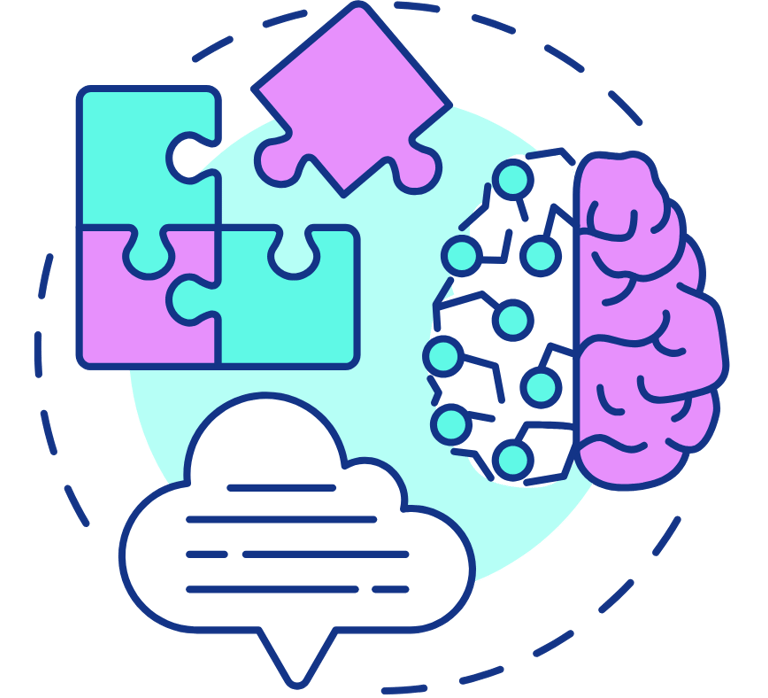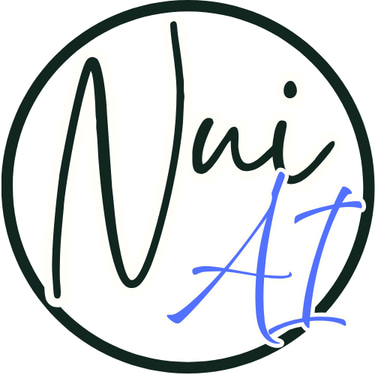RAG Local AI: Chunk Size and Overlap
Unlock the Power of Local AI: Mastering Chunk Size and Overlap in RAG Systems
Austin K
6/5/20255 min read


So, you're diving into the exciting world of local Retrieval Augmented Generation (RAG) systems, empowering your own AI to answer questions based on your private documents. That's fantastic! You're on the cusp of unlocking a wealth of information. But before you unleash your local knowledge base, there are a few crucial concepts to understand, and today, we're going to break down two of the most important: chunk size and overlap.
Think of your document library – PDFs, notes, web pages – as a giant jigsaw puzzle. To make sense of it, your RAG system needs to take this puzzle apart into smaller pieces. These pieces are our chunks. But how big should these pieces be, and how much should they overlap? These decisions have a profound impact on how well your AI can find the right information and generate helpful answers.
Let's dive in!
What Exactly are Chunk Size and Overlap?
Imagine you have a long paragraph you want to process.
Chunk Size: This determines how many "tokens" (roughly words or parts of words) each piece of your document will contain after you break it down. Think of it as the size of each individual puzzle piece. A chunk size of 256 means each piece will contain approximately 256 tokens of text.
Overlap: When you cut your document into chunks, you can choose to have some overlap between consecutive pieces. The overlap is the number of tokens that are repeated at the end of one chunk and the beginning of the next. Imagine this as making sure the edges of your puzzle pieces have some common image, making it easier to see how they fit together.
Here's a simple illustration:
Let's say we have the sentence: "The quick brown fox jumps over the lazy dog. The lazy dog barks loudly at the mailman."
If we use a chunk size of 10 tokens and an overlap of 3 tokens, the chunks might look something like this (simplified tokenization):
"The quick brown fox jumps over"
"jumps over the lazy dog. The"
"dog. The lazy dog barks loudly"
"barks loudly at the mailman."
Notice how "jumps over the" and "dog. The lazy" are repeated between the chunks, that's the overlap in action.
Why Do Chunk Size and Overlap Matter So Much?
These two seemingly simple parameters have a significant influence on the performance of your RAG system in several key ways:
Contextual Understanding:
Too Small Chunks: If your chunks are too small, they might not contain enough context to fully understand the meaning of a particular sentence or idea. Imagine a single puzzle piece showing only a small part of a larger image – you lose the overall picture. This can lead to your AI retrieving irrelevant snippets because it lacks the broader context.
Too Large Chunks: Conversely, if your chunks are too large, they might contain too much information, diluting the relevant parts with noise. This can make it harder for the AI to pinpoint the exact information needed to answer a specific question. It's like having a puzzle piece that shows half the puzzle – the relevant part might be there, but it's buried amongst irrelevant details.
Information Retrieval Accuracy:
No or Low Overlap: Without sufficient overlap, critical information that spans across two chunk boundaries might be missed entirely during retrieval. Imagine a sentence being cut in half with each half on a separate, non-overlapping puzzle piece. When you search for the complete sentence, neither piece alone will be a good match. Overlap helps ensure that these boundary-spanning pieces of information are captured within at least one complete chunk.
Embedding Quality:
The effectiveness of your RAG system relies heavily on how well your document chunks are represented as numerical vectors (embeddings). The quality of these embeddings depends on the semantic coherence of the text within each chunk. Incorrect chunking can lead to poor-quality embeddings that don't accurately reflect the meaning of the original text.
Computational Efficiency:
Smaller chunk sizes generally lead to more chunks, requiring more processing power and storage space for embedding them.
Larger chunk sizes can increase the processing time per chunk.
Higher overlap also increases the total number of chunks. Finding the right balance is crucial for efficient resource utilization.
General Rules of Thumb and Recommendations
While the optimal settings often depend on the specific characteristics of your documents and the types of questions you anticipate, here are some general guidelines to get you started:
For a Long PDF Document (1000 pages) Without Pictures or Tables:
This type of document likely contains dense, narrative text where context often builds over several paragraphs.
Recommended Chunk Size: A good starting point would be in the range of 500 to 1000 tokens. You might even experiment slightly higher if your embedding model allows and your initial tests show good retrieval with larger contexts. The goal is to capture meaningful paragraphs or sections within a single chunk.
Recommended Overlap: Given the length and potential for related ideas to span across pages, a moderate overlap of 50 to 200 tokens (around 10-20% of the chunk size) is advisable. This helps maintain contextual continuity between adjacent chunks and reduces the risk of missing information at the boundaries.
For a PDF Document Containing Lists (10 Pages):
Lists often contain concise, self-contained pieces of information.
Recommended Chunk Size: For lists, smaller chunk sizes are generally more effective to keep individual list items or small groups of related items together. A range of 100 to 300 tokens might be suitable. You want to avoid breaking up individual list items across multiple chunks.
Recommended Overlap: A smaller overlap might suffice here, perhaps in the range of 20 to 50 tokens. The primary goal of the overlap would be to handle any introductory or concluding text related to the list or to ensure that slightly longer list items aren't split unnecessarily.
Important Considerations:
Your Embedding Model's Token Limit: Always be mindful of the maximum input token limit of the embedding model you are using. Your chunk size should generally be well below this limit to avoid truncation.
The Nature of Your Questions: If you expect highly specific, fact-based questions, smaller chunks might be beneficial. If your questions are more open-ended and require understanding broader themes, larger chunks might be better.
Experimentation is Key: These are just starting points. The best way to determine the optimal chunk size and overlap for your specific documents and use case is to experiment. Try different settings, ask various questions, and evaluate the quality of the retrieved context.
Beyond the Basics: Advanced Considerations
As you become more comfortable with RAG systems, you might explore more advanced techniques:
Semantic Chunking: Instead of fixed token counts, you can use more sophisticated methods to split documents based on semantic boundaries like paragraph breaks, section headings, or topic shifts.
Dynamic Chunking: Some advanced systems can dynamically adjust chunk sizes based on the query or the content being processed.
Metadata Management: Incorporating metadata (e.g., document title, section headings, page numbers) with your chunks can further enhance retrieval accuracy.
Conclusion: Finding the Right Balance
Mastering chunk size and overlap is a crucial step in building an effective local RAG system. By understanding how these parameters influence context, retrieval, and efficiency, you can fine-tune your system to extract the most relevant information from your documents. Remember that there's no one-size-fits-all answer, and experimentation is your best friend. Start with the general guidelines provided, analyze your results, and iterate until you find the sweet spot that unlocks the full potential of your local AI knowledge base.
Happy RAG-ing!
